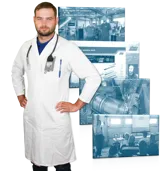
Mechatronics
Sensors, Pumps, Injectors, and Filters—Everything You Need to Keep DEF Systems Running at Peak Performance

Sensors, Pumps, Injectors, and Filters—Everything You Need to Keep DEF Systems Running at Peak Performance
Modern exhaust and emission systems rely on a range of electronic and mechanical components—commonly referred to as Mechatronics—to control emissions and validate system performance.
With proper maintenance of both the engine and exhaust system, along with the use of high-quality Mechatronic parts, your emission system will operate smoothly and efficiently, optimizing both fuel and DEF consumption. Without it, you risk reduced performance, OBD fault codes, and potentially costly damage to critical emission components.
At Dinex, we offer a full range of Mechatronics—tested and validated to meet OE specifications—along with the support, guidance, and technical expertise you need when challenges arise. That’s what true partnership means to us.


All sensors, pumps, and injectors are thoroughly tested at the OE-endorsed Dinex Test Center before being released for sale.

We cover all vital mechatronics needed to service emission systems for all makes of trucks and busses

When it comes to Mechatronics, you need more than just a supplier—you need a partner. And that’s exactly what Dinex is.
Here’s how a typical EPA-regulated aftertreatment system operates—and how each Mechatronic component plays a key role in keeping everything running smoothly:
Throughout the system, temperature sensors monitor exhaust gas heat. Some confirm whether conditions are right for DEF injection, while others help detect if the DPF is actively regenerating.
The pressure sensor measures the pressure difference across the DPF. A low reading may signal a damaged filter, while a high reading could mean it’s time for regeneration or cleaning.
The upstream NOx sensor captures a baseline reading of nitrogen oxides before the SCR system.
Using this data, the ECU (Engine Control Unit) commands the DEF pump to inject the exact amount of DEF needed at that moment.
To protect the system, an inline DEF filter prevents contaminants from reaching the injector and catalyst.
Finally, the downstream NOx sensor verifies that NOx levels have been sufficiently reduced. If not, the system will attempt to adjust—or may trigger a fault code.

Working with Mechatronics isn’t always simple. A faulty sensor or defect injector can be replaced, but the root cause as to why it failed may very well be elsewhere in the system.
Through his alter-ego Dr. NOX, our Customer Care Manager, Karlis Banis, has dedicated his career to spreading knowledge about exhaust and emission systems, and why they act like they do. Understanding how the individual components work and how they are affected by other features in the system, is vital when doing maintenance and repairs.
Stay tuned for updates at his personal hub, or reach out to organize online or onsite training sessions.

Our 2025 School Bus catalog covers emission systems for the most popular EPA10-21. 40 pages with 21 systems and hundreds of quality, competitive spare parts.
Get your hardcopy by reaching out to your local sales contact, or browse the full catalog online right now!
Explore our range of parts in the catalogs and flyers below.